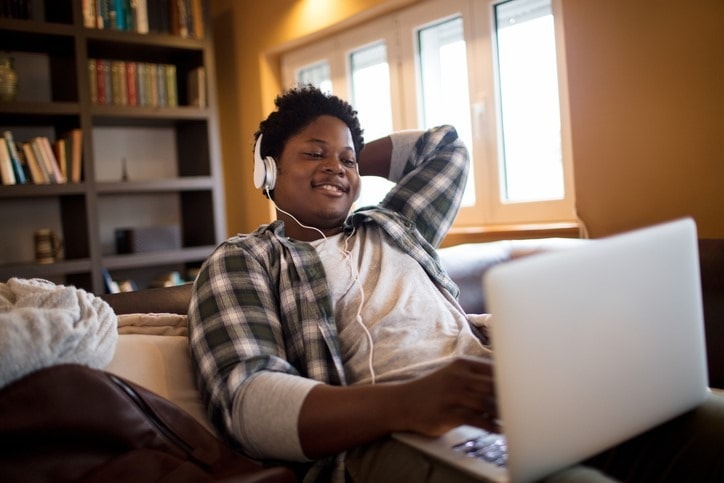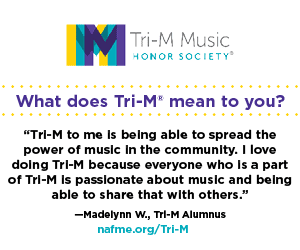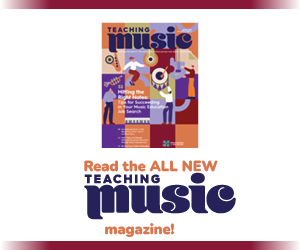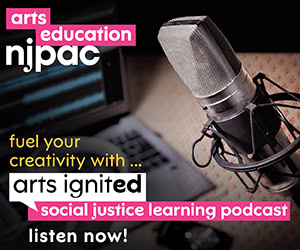/ News Posts / How an Online Music Program Unlocked New Discoveries for NY Students
How an Online Music Program Unlocked New Discoveries for NY Students
Sponsored by Soundtrap
Travis Washington is an educator and general music teacher at P.S. 072, Dr. William Dorney in the Bronx, New York, working with a diverse student body in a highly under-resourced area. In many respects, the school is an important center in bringing music, ballroom dancing, theater, and other great experiences to all students. Washington recognizes the importance of keeping music available and supports efforts to provide better music funding in New York schools.
Washington teaches choir and leads the Young Vocal Scholars Program, and before COVID arrived, he was excited to move forward on the culmination of learning through live performances. With school closure, all that changed, and he quickly pivoted to virtual learning. Through the initial transition, he discovered how online learning options, such as Soundtrap, could extend student projects and even stretch music learning to new levels.
A Remote Learning Shift and Discovery
According to Washington, “When COVID hit and we couldn’t continue with the traditional choir program, the school looked for remote solutions. Soundtrap was exactly what we needed. We began conducting Young Vocal Scholars choir sessions remotely through Soundtrap and filled our extra Soundtrap seats with students from the District 8 Choir who weren’t being served music at all―doing similar projects that they had been creating previously in my classes. It was incredible to suddenly recognize that there were far more students interested in music who could connect via their laptops and tablets at home.”
The school had synchronous sessions five days a week for any 4th or 5th graders who wanted to stop by and participate and held lessons for two hours a day. Hour one was a mini-lesson, with specific work assigned with hour two, an instructional lunch period called “Open Studio.” During the open session, all students would share the projects that they were working on virtually, sharing their screen and Soundtrap tab through Google Chrome.
Parameters were established to help in the creative process. Washington found 4th and 5th graders need some extra structure to actualize the recording process fully. He and his partner teacher Alex Depersia started to post the Soundtrap tutorials in Google Classroom with music lessons based on the tutorial’s theme. “We produced loops and recordings on mixing volume, automation, and mastering. Every tool we gave, we saw them applying to their music creation, including older projects,” said Washington. They provided a smooth pop song structure in simple bar signatures 4/4, 8s, or 16s. Using Variation, students became mindful of the subtle elements of songwriting. Eventually, the students created multi-tracks and full songs. “The most advanced 5th graders were able to write their own raps to go along with the music they produced,” said Washington. “Once the projects were complete, they added music visualizers with effects, and their final projects were promoted with student privacy in mind.”
The Advantages of Virtual Learning
Quarantine turned out to be an advantage in disguise as students could get much deeper into music engagement through Soundtrap than what standard in-class time would typically allow. In the past, Washington saw most kids once a week, and the most advanced kids three or four times a week for 45 minutes. But now, students became self-motivated and had access to software they loved, so they just kept creating over the summer, doing far more hours of work than they did during the regular school year. “Most kids avoid logging into anything that resembles school, but these students were motivated and excited to learn,” remarked Washington.
Soundtrap revolutionized his classroom in a virtual setting. Students became more engaged than ever before. Washington’s “4-star artists,” as he refers to his highly motivated students, kept making songs. He recalled one of them saying to him, “Music class was cool because we sang together, but Soundtrap is cooler because it allows us to make projects together, and they sound good.”
Music Funding Put to Good Use
New York City is presently cutting funding for music education because of the pandemic’s economic hardship. Some may believe it’s impossible to continue successfully in a remote environment, but that hasn’t been Washington’s experience. Online programs have advanced to the point that music is now positioned nicely to go virtual.
As Washington realized that cuts in music programming were taking place, he reached out to social media to get the word out that music education can thrive in virtual settings, and maybe even better than within the classic classroom teaching models. Apps and virtual collaboration may provide sound solutions for schools and districts experiencing cutbacks and trying to get the most out of smaller budgets.
About D. Travis Washington:
D. Travis Washington graduated from Rowan University with Bachelor’s degrees in Music Education and Vocal Performance. Currently, he serves as the General Music Teacher & Choir Director at P.S. 72 The William Dorney School located in Throggs Neck, Bronx, NYC.
Did this blog spur new ideas for your music program? Share them on Amplify! Interested in reprinting this article? Please review the reprint guidelines.
The National Association for Music Education (NAfME) provides a number of forums for the sharing of information and opinion, including blogs and postings on our website, articles and columns in our magazines and journals, and postings to our Amplify member portal. Unless specifically noted, the views expressed in these media do not necessarily represent the policy or views of the Association, its officers, or its employees.
February 8, 2021. © National Association for Music Education (NAfME.org)
Published Date
February 8, 2021
Category
- Technology
Copyright
February 8, 2021. © National Association for Music Education (NAfME.org)







